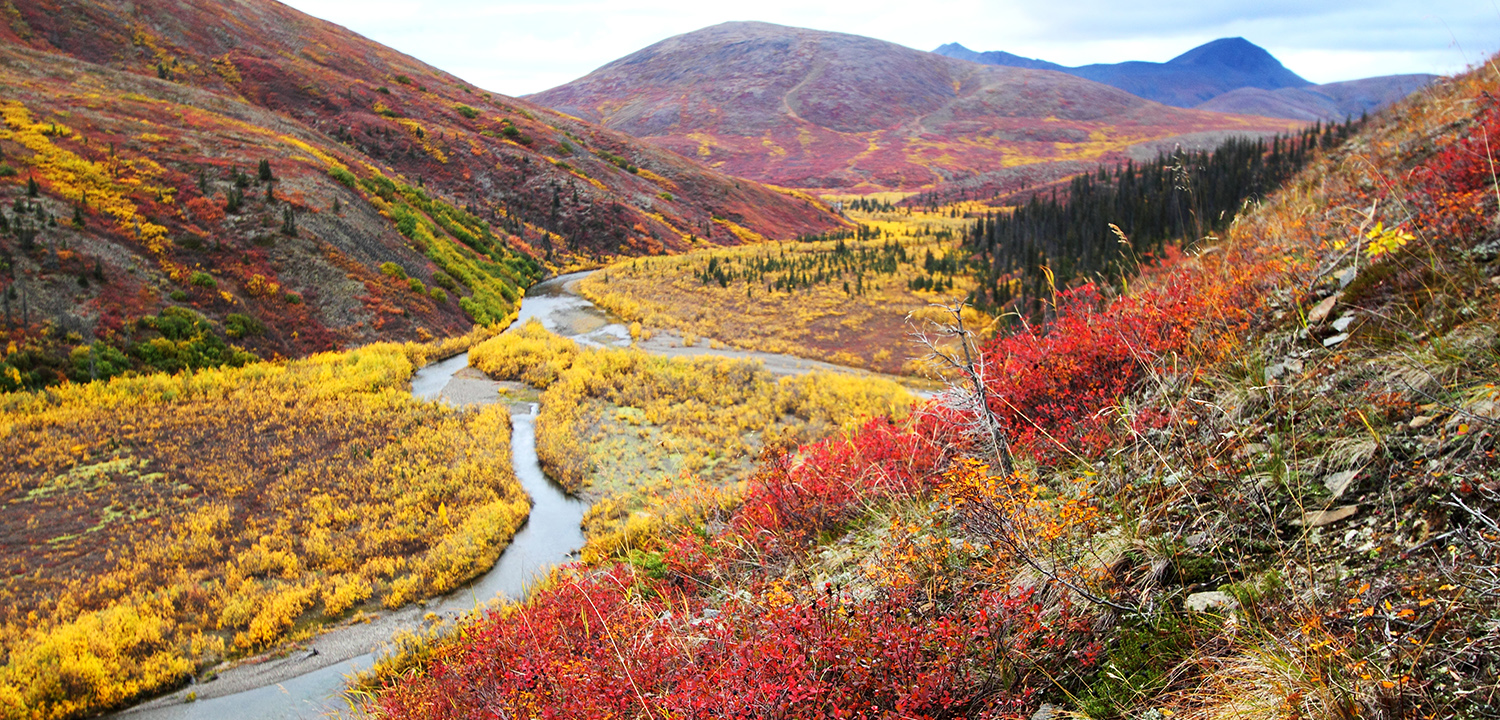Conservation work may be a marathon, not a sprint. But we’ve come a long way in three decades.
Since 1992, Wild Salmon Center has been laser-focused on our work to protect wild salmon rivers across the North Pacific. Because we’re always looking ahead—to the next policy campaign, restoration plan, or critical partnership—we sometimes forget to reflect on how far we’ve come.
Together, we’ve achieved so much to celebrate over the past three decades. From northern Alaska to the strongholds of Southern Oregon, dozens of Pacific salmon rivers are safer because you stepped up. These wins—your wins—prove it.
28 million acres protected in Alaska
When U.S. federal executive orders in 2021 aimed to strip protections from 28 million acres of protected Alaska public land, hundreds of Alaska Native Tribes, businesses, and thousands of others fought back.
These are some of the planet’s last large, intact landscapes—key to the food sovereignty of 100+ Alaska Native communities and cherished by hunters, fishers, and outdoor recreationalists.
Following a national campaign led by Wild Salmon Center and many partners, the Interior Department moved in August 2024 to safeguard these lands from extractive industrial development: a historic win for salmon, wildlife, and all those who love them.
Wild fish prioritized in 49 North American rivers
In the Pacific Northwest, a visionary new way to save salmon is gathering strength. Expanding from a novel Wild Salmon Center-backed 2014 plan for Oregon, 49 rivers are now managed first and foremost for wild fish.
These “wild fish management zones” stretch from Washington’s Sol Duc River to south of the Illinois River in Oregon. In these strongholds, managers are emphasizing wild fish over hatchery fish and prioritizing genetic biodiversity.
Skeena River estuary saved from LNG
A liquified natural gas terminal right on the mouth of British Columbia’s pristine Skeena River? When this idea surfaced in 2013, Wild Salmon Center, our local partners, and multiple First Nations rose in protest.
The project risked critical eelgrass beds used by juvenile salmon from at least 40 different populations—and would have set Canada a huge step backward in meeting its Paris Accord climate commitments.
First Nations and core WSC partner SkeenaWild worked all fronts—scientific research, environmental reviews, legal challenges, and even civil disobedience. By 2017, the Skeena LNG project was dead—and one of the Pacific’s great wild salmon and steelhead systems remained intact.
World’s first salmon park created on the Kol
When the 544,000-acre Kol River Salmon Refuge was first established in 2006, it came with a 10-year sunset. In 2015, the world’s first salmon park—by then, also a UNESCO World Heritage Site—was permanently protected by Russian law.
Six salmon species thrive in the Kol system, which flows from west-central Kamchatka 75 miles west to the Sea of Okhotsk. Steelhead, Dolly Varden char, and white spotted char are also abundant here, making this stronghold one of the most productive in the Pacific Rim.
Susitna River dam project stopped
Alaska’s $6 billion Susitna-Watana dam would have been the second tallest in the U.S., threatening all five of the river’s salmon species, and flooding 40,000 acres of prime recreation and hunting lands near Denali National Park.
In addition to wreaking havoc on this salmon stronghold, the dam would have harmed key local economic sectors and set a bad precedent for future energy development in Alaska. Convinced by our Susitna River Coalition and thousands of Alaskans, then-Governor Bill Walker shut the project down in 2016.
Today, the Susitna system faces a new threat: a 100-mile industrial road through the West Susitna wilderness funded by taxpayers for the benefit of extractive industries. Want to make sure this Alaskan treasure stays safe? Join our Defend the West Su campaign to take action.
Oregon Private Forest Accord becomes law
Years of patience and grit won out in October 2021, when a Wild Salmon Center-led conservation coalition reached agreement with timber companies to reform forestry practices on 10 million acres of private forestland.
Enshrined in state law in 2022, the Private Forest Accord’s new rules are improving habitat along more than 60,000 river miles, making life better for Oregon Coast coho and other endangered species.
But the PFA isn’t safe—yet. State agencies still need to secure federal approval of a PFA Habitat Conservation Plan by 2027. And to do that, we need to make sure PFA’s programs receive the funding they need. Want to track the action? Get all the updates in our monthly Oregon Forest & Fish newsletter.
Bristol Bay saved from Pebble Mine
For decades, the threat of Pebble Mine hung over Bristol Bay, Alaska. If built, the world’s largest open pit mine would be an existential threat to the world’s greatest wild sockeye salmon fishery.
Since 2011, our coalition led by the United Tribes of Bristol Bay rallied waves of opposition to the project. The U.S. Environmental Protection Agency received more than FOUR MILLION letters urging Bristol Bay’s protection. And the science was unequivocal: Pebble was the wrong mine, in the wrong place.
On January 31, 2023, we declared victory in this long campaign, when EPA announced that Clean Water Act protections will safeguard Bristol Bay’s main headwaters: a firm roadblock for Pebble and any mine like it.
Now, our Bristol Bay Forever coalition is working to protect more of this irreplaceable watershed. Learn more about how you can stand with Bristol Bay—forever.
Thanks for being right there beside us, celebrating the wins. Help us gear up for what lies ahead: sign up for our Newsletter and donate today.







